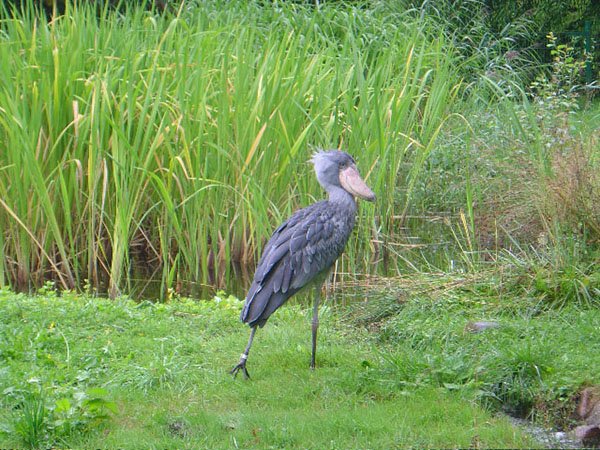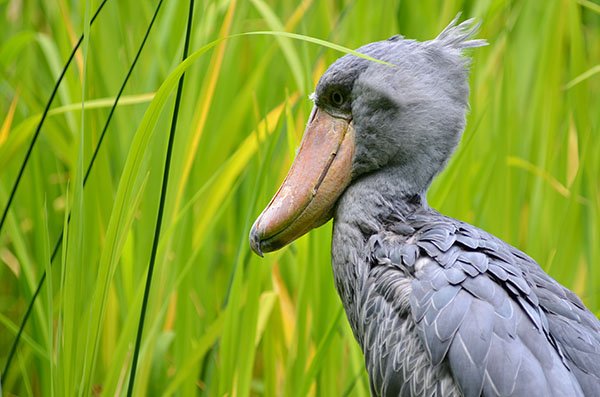Balaenicipitidae
Olaf Oliviero Riemer, CC BY-SA 3.0 https://creativecommons.org/licenses/by-sa/3.0, via Wikimedia Commons
Hey kids, welcome back to our series on the mysteries of created kinds!
Hopefully you enjoyed last week's background information. Today, we get to meet our first created kind! Before I reveal which kind we’re going to talk about, did anyone get it right? If you didn’t look at last week’s post or aren’t sure, go back and have a look at the clue again. Done? Ok, get your guess in mind and let’s have a look at this week’s baramin.

This week we’re looking at a bird with a very large bill. It is found in the White Nile region, living in swamps. It is well equipped for its habitat, standing up to four and a half feet tall, with long legs that allow it to wade into shallow water. This bird is a predator, feeding on fish, frogs, turtles, snakes and even baby Nile crocodiles! It hunts from platforms of floating plants, picking its prey out of the shallow water. It has a flexible hyoid bone and enlarged esophagus to allow it to swallow its prey whole.1
These birds nest in permanent swamps. Parents form nests from the surrounding vegetation.2 These nests are large mounds of vegetation and will contain anywhere from one to three eggs. Both parents will care for the eggs and young, providing up to six items of food, along with water for each chick until the chicks are self-sufficient.3 Siblicide is common, and sometimes parents will elect to only feed and water one chick, particularly in difficult times.
Have you figured out what kind we’re talking about yet? Why of course it’s the shoebill kind! Their bill is huge, giving the kind its name! Found in the African interior, there are estimated to be approximately 5,000-8,000 of them surviving in the wild. Given the low number of babies surviving each year, these birds are likely to struggle to increase their numbers quickly. However, they are not endangered so there is hope there will be shoebills for a long time to come.
Want to test your knowledge? Try out this crossword puzzle!
Stay tuned for next week, when we travel halfway across the globe to look for our next created kind. Your clue for the week is:
Clue
This small attractive vocal songbird is the only member of its kind. It enjoys living near water, and mates for life.
Footnotes
- Hideki Endo, Takeshi Yamasaki, Kent Mori, Kohei Kudo, and Daisuke Koyabu. “Cuntional morphology of the enlarged pharynx and hyoid bone of the shoebill.” Japanese Journal of Zoo and Wildlife Medicine. 19, no. 1 (2014), 21-25.
- John, J.R.M. Nahonyo, C.L. Lee, W.S. and Msuaya. C.A. “Observations on nesting of shoebill Balaeniceps rex and wattled crane Bugeranus carunculatus in Malagarasi wetlands, western Tanzania.” African Journal of Ecology, 51, no. 1 (2013), 184-187.
- Lucinda Buxton, Jenny Slater and Leslie H. Brown. “The breeding behavior of the shoebill or whale-headed stork Balaencipes rex in Bangweulu Swamps, Zambia.” African Journal of Ecology 16, no. 3 (1978), 201-220.
- © 2024 Answers in Genesis
- Privacy Policy
- Contact
- About


